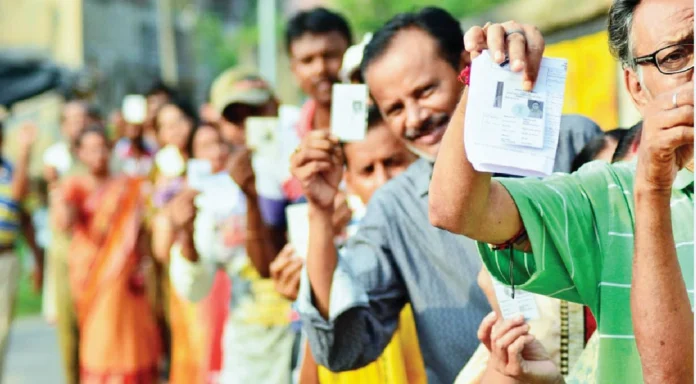India’s electoral framework operates on a decentralized model, with staggered schedules for Lok Sabha, state assemblies, and local bodies. Every five years, the nation votes for its central government, while states follow their own timelines—a system inherited from India’s early post-independence years.
From 1952 to 1967, simultaneous elections for Parliament and state assemblies were the norm. However, political instability and premature dissolutions disrupted this harmony, leading to today’s fragmented cycle. This decentralized structure, while respecting regional autonomy, imposes logistical and administrative strains. The Election Commission of India (ECI) grapples with mobilizing resources across vast geographies, diverting funds, personnel, and security forces repeatedly.
The prolonged “election mode” stifles governance continuity, as officials pivot between policymaking and campaigning. Proponents of One Nation, One Election argue that synchronizing polls could slash costs and streamline governance. Critics, however, warn of threats to federalism and voter fatigue. As discussions intensify, the proposal demands scrutiny of its constitutional, logistical, and democratic implications.
The Concept Of “One Nation, One Election”
Definition and scope
The proposal seeks to unify Lok Sabha and state assembly elections under a single five-year cycle. Voters would elect representatives for both tiers of government simultaneously, reducing the frequency of polls and consolidating resources.
Historical Context: A lost synchronization
India’s first four general elections (1951-1967) were synchronized. Political upheavals—mid-term dissolutions, President’s Rule, and defections—shattered this rhythm. States gradually adopted independent cycles, embedding today’s staggered system.
Objective: Efficiency over fragmentation
The primary goal is cost reduction. Separate elections drain Rs 30,000–Rs 50,000 crore annually, as per ECI estimates. Simultaneous polls could curb expenses on security, logistics, and personnel while mitigating policy paralysis caused by frequent enforcement of the Model Code of Conduct (MCC).
Constitutional and Legal Hurdles
Amending the Constitution
Key articles requiring revision are:
- Article 83/172—Align Lok Sabha and state assembly terms.
- Article 85/174—Restrict premature dissolutions by the president/governors.
- Article 356—Limit arbitrary imposition of President’s Rule, which disrupts state terms.
Election Commission’s expanded role
Simultaneous elections would demand:
- Doubled EVM/VVPAT deployment.
- Coordinated security mobilization.
- Constitutional clarity to manage early dissolutions.
PROS: THE CASE FOR SYNCHRONIZATION
Economic efficiency
- Consolidating elections could save thousands of crores annually—funds better spent on welfare and infrastructure.
- Reduces recurring costs of personnel, security, and logistics.
Reduced administrative chaos
- Minimizes disruptions from MCC enforcement, enabling continuous governance.
Political stability
- Fixed five-year terms reduce populist short-termism and mid-term collapses.
Voter engagement
- A unified “festival of democracy” may boost turnout and holistic issue awareness.
Cons: Risks and Challenges
Federal concerns
- Synchronization risks homogenizing India’s diversity, sidelining regional voices in favour of national narratives.
- States may resist term extensions or curtailments as central overreach.
Logistical nightmares
- Scaling EVM availability and security forces for one million-plus booths is daunting.
Regional parties at risk
- National issues could overshadow local agendas, marginalizing state-focused parties.
Voter fatigue
- Cognitive overload from juggling multiple candidates and issues may dilute accountability.
Conclusion: A Nuanced Path Forward
The One Nation, One Election proposal offers tantalizing efficiencies, but risks unsettling India’s federal balance. While cost savings and governance continuity are compelling, the constitutional overhaul and logistical challenges are formidable. Regional parties fear erasure, and voters may struggle with diluted accountability.
A phased rollout—piloting synchronized polls in willing states—could test feasibility. Any reform must prioritize safeguards for federalism, judicial oversight, and voter education. As India debates this seismic shift, the core question remains: Can efficiency coexist with pluralism?
Judicial Precedents: Guardrails Of Federalism
- SR Bommai vs Union of India (1994)—Curtailed misuse of Article 356, safeguarding state autonomy.
- Kihoto Hollohan vs Zachillhu (1992)—Upheld anti-defection laws to stabilize governments.
- Basic Structure Doctrine—Ensures amendments don’t erode federalism or democratic principles.
—The writer is Pro-Vice-Chancellor, IILM University, Gurugram


